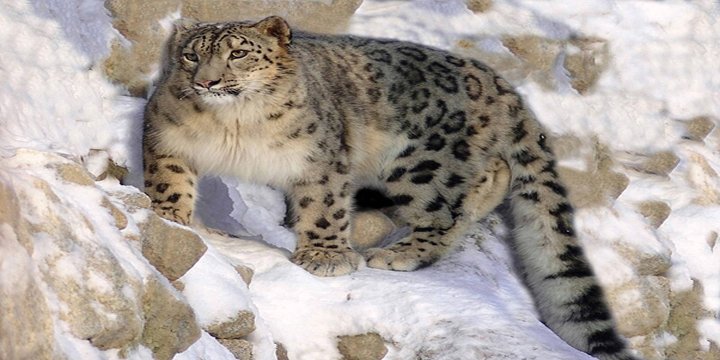Snow Leopards
Context:
- Recently, the Padmaja Naidu Himalayan Zoological Park (PNHZP) in Darjeeling has made headlines for successfully breeding 77 snow leopards since the 1980s.
- With this it got placing next only to New York’s Bronx Zoo, which has produced 80 snow leopard cubs since it started breeding experiments with the species in the 1960s.
About Snow Leopard:
- The snow leopard commonly known as the ounce, is a species of large cat in the genus Panthera of the family Felidae.
- It’s fur is whitish to grey with black spots on the head and neck, with larger rosettes on the back, flanks and bushy tail.
- The fur is thick with hairs measuring from 5 to 12 cm (2.0 to 4.7 in) in length, and its underbelly is whitish in color.
- The snow leopard shows different kind of adaptations for living in a cold, mountainous environments. Its small rounded ears help to minimize heat loss.
- It is solitary and mostly active at dawn till early morning, and again in afternoons and early evenings.
- They mostly rest near the cliffs and ridges that provide vantage points and shade.
- The species is native to the mountain ranges of Central and South Asia.
- It inhabits alpine and subalpine zones at elevations of 3,000–4,500 m, which ranges from eastern Afghanistan, the Himalayas and the Tibetan Plateau to southern Siberia, Mongolia and western China.
- In the northern part of its range, it also lives at lower elevations.
- It is listed as Vulnerable on the IUCN Red List due to fact that the global population is estimated to number fewer than 10,000 mature individuals and is expected to decline about 10% by 2040.
- It is mainly threatened by poaching and habitat destruction and infrastructural developments.


